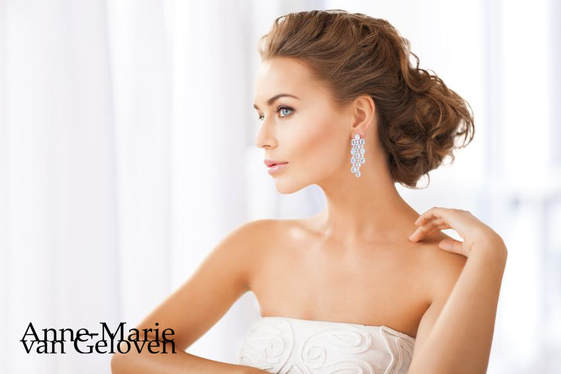|
3/21/2023 Comments Exosomes in skin care and treatments
Skin boosters using micro-injections with predominantly non-crosslinked hyaluron filler gels like Restylane® Vital, Juvéderm® VOLITE or Belotero® Revive are gaining popularity for very good reasons. Unlike traditional dermal fillers, they are not injected beneath the skin to volumise or shape the face. Instead, they are very fine dermal easily integrated "fillers" that are injected into the skin to hydrate, improve skin quality and give very natural results. They are also gently bio-stimulating, meaning they "stretch" the fibroblasts in the injected area and as a result this cell is producing more collagen. An effective bio-remodeling skin booster using 2 times 5 injection points (bio-aesthetic points - BAP) for a full-face treatment is Profhilo®. However, the recent K-beauty treatment via topical application or micro-injections with bio-remodeling exosomes is gaining popularity.
Exosomes are nano-sized cargos with a lipid bilayer structure carrying diverse biomolecules including lipids, proteins, and nucleic acids. These small extra cellular vesicles are secreted by most types of cells (skin relevant are the keratinocytes and fibroblasts) to communicate with each other. Exosomes circulate through bodily fluids and can transfer information. They can be either good or bad, however taken from a healthy young cell they will be sending the best messages. Studies have shown the efficacy of exosomes in skin ageing. They can facilitate skin remodeling (increasing collagen and decreasing senescent cells) leading to skin rejuvenation. Cells sleep because they don't get enough bio-stimulation: messages. Better messages is better skin architecture. This is why exosomes are so important. At the World Stem Cell Summit it used to be 90% about stem cells (they only life 28 days) and 10% about exosomes, now it is 50/50. The reason is called heterochronic parabiosis. 1. One of the most robust methods of improving the function of ageing tissues is that of heterochronic parabiosis,. The effect was shown in a study with a surgical procedure whereby a young and old mouse are joined together so the share one circulatory system. 2 This study according to dr Kate Goldie AMWC 2023 Monaco is proof that it is not the cells, but the messages they give that is transforming lots of different tissues, which has the ability to profoundly regenerate tissues. That is why people are so interested in exosomes. Exosomes taken from a very young cell give potentially the best messages as they "send the message" of youth. EV (Extra-cellular Vesicle) is the actual correct term as messages come as micro-vesicles and exosomes and form 2 different messages from the cell. 3 We start to understand active ingredients. In exosomes one of the most important ingredients is RNA and is part of the future of regenerative aesthetics. Messenger RNAs up-regulate and Micro-RNAs down-regulate. They physically go into the cell and change how the cells works. So we have to be cautious. In this study "The therapeutic and commercial landscape of stem cell vesicles in regenerative dermatology" dr Kate Goldie et al. assessed all available exosomes in the (UK) market. Most exosomes used in-office are extracted from human stem cells and frozen to keep them as stable. Unlike actual stem cells, exosomes don't have a nucleus and therefore they are safe to use. Exosome therapy is the application of topical exosomes after in-office treatments which disrupt the skin barrier, like laser resurfacing, chemical peelings or microneedling. Exosomes are also used in micro-injections as a stand-alone skin boosting treatment and in a few skin care products. Be aware that as usual, not all products are alike. The way exosomes are sourced (origin), size, their content (can be growth factors) and function determine largely their efficacy and the price of the product. One of the challenges is that we do not really know what is in the exosomes. They are like small packages with a lot of messengers. The use of exosomes looks promising for several indications: regenerative aesthetic medicine, healing, scar treatment, burns and atopic dermatitis, however their safety is not yet fully established and no official registration for their use granted. Take care 1. Cell Cycle. 2012 Jun 15; 11(12): 2260–2267. Heterochronic parabiosis for the study of the effects of aging on stem cells and their niches Irina M. Conboy 2. Heterochronic parabiosis reprograms the mouse brain transcriptome by shifting aging signatures in multiple cell types Methodios Ximerakis 3. J Cell Biol. 2013 Feb 18; 200(4): 373–383. Extracellular vesicles: Exosomes, microvesicles, and friends Graça Raposo et al
Comments
7/22/2018 Comments Skin care with something blue
Lately I was trying out several skin care products with a very similar smell, which I actually started to appreciate during my evening skin care routine.
Usually, an overpowering fragrance in a product puts me off, however I consider this one soothing. The (in my opinion) pleasant odour comes from an ingredient called Tanacetum Annuum or Blue Tansy (Moroccan Blue Chamomile - not to be confused with Tanacetum Vulgare) and is found as the signature ingredient in some more luxury "Blue" products like May Lindrom's beauty balm concentrate called "The Blue Cocoon", Sunday Riley's tranquility cleansing balm called "Blue Moon" (Blue Tansy Leaf oil) and her sleeping night oil called "Luna". All products are relatively "oily" and you only need the littlest amount. Blue Tansy is "calming", as it supposed to have anti-inflammatory and anti-allergenic, anti-histaminic and anti-fungal properties. Tanacetum Annuum is an essential oil with a very dark blue collar due to chamazulene. The aromatic description is sweet, warm fruity, with subtle floral, camphorous and herbaceous undertones. It's most often mixed in with other oils or ingredients to dilute it, as the recommendation is not to use concentrations above 5%. Although it has anti-inflammatory properties, some might have intolerance for it as it contains camphor, which can cause sensitivity. Therefore, I would not recommend to use multiple products containing Blue Tansy in conjunction. Pure Blue Tansy oil is not easy to get hold of, thus an expensive ingredient. If I was asked choose one product, I would pick Sunday Riley Luna sleeping night oil which also contains Retinol. Luna is easy to use and incorporate in a night time regimen, is less expensive when compared to May Lindrom's "The Blue Cocoon", very popular amongst "beauty guru's" and receives many positive reviews. Alternatively, there are other evidence based skin care ingredients with proven anti-inflammatory properties, for example Arctiin (anti-inflammageing, stimulates hyaluronic acid and collagen production) and Licochalcone (also powerful anti-oxidant). They don't have the blue colour or "calming" odour, which some may find offensive. Hope you enjoy healthy skin & take care. 
Anything you don't enjoy using or doesn't cater to your needs, is not worth buying.
Skin care is personal and there is a good product for all wallet sizes. However, is a luxury product better than a more affordable one? Is expensive the best? There are actually many factors influencing the prize of a product, other than the prestigious brand-name and advertising costs. Note: This content will mainly apply to skin care catering to the need of healthy, thus not problematic skin types. Problematic (or diseased) skin needs special care which usually is not found in the prestige or luxury skin care segment. Realistic expectations If you are disappointed by the results your skin care products, you might not have bought the right product for you. Make sure that your understand your skin type. There is also a change that you might have too high expectations of what skin care can actually do for you. Your skin will definitely benefit from a good skin care regimen with the right product(s). However, don't expect a metamorphosis, especially not from one day to the next. There are limitations to what skin care can do for your skin and actually what skin care is allowed to do. These rules apply for all skin care products. Formula Some very excellent skin care ingredients are expensive, however there are many very good ingredients which are affordable. Expensive ingredients can be useless "actives" in skin care, and "sound" appealing. Usually "rare" ingredients are expensive, but not all rare ingredients are "the best" actives. The majority of active ingredients only give visible or noticeable results in optimal concentrations. Many skin care products in the prestige or luxury skin care category have long INCI lists (ingredient lists). This will increase the price of the product, but does not necessarily mean that this is the right skin care for you. Furthermore, there is more to a formula than an ingredient list! If the end products texture (also called galenics) is too greasy or too light for your liking, you might not enjoy using the product, and it is not worth the splurge. Luxury brands invest in pleasurable textures of the formula to ensure a positive user experience and high repurchasing rate. A nice texture, doesn't necessarily ensure high performance of a product. Actually the more occlusive products (sometimes regarded as greasy or heavy), are commonly well performing in preventing transepidermal water loss, thus hydration. Note: especially with very long ingredient lists it is highly recommended to try the product before you buy, particularly if you have sensitive skin, as the risk of a skin reaction is increased when the number of ingredients is high. Check also if the product was tested and proven suitable for sensitive skin in this case. Innovation & technology New active ingredients may be exclusively developed by a company and it took them a lot of time, effort and money to collect enough data and proof that this particular active ingredient is effective and safe to use. Products containing such a (probably patented) ingredient can be more expensive than products with more generic frequently used ingredients. Sometimes expensive technology is especially developed or used to improve the formula, texture or container. Packaging Formula's may need a special container or dispenser to be stored appropriately. This is more expensive than a simple standard packaging. Some containers are only luxury and aim to look amazing in your bathroom or on your dresser. Others might be very "inviting", quick and easy to use. If this is what you prefer and enjoy, it might be worth the splurge. Evidence based Evidence is in my opinion compulsory, however not always scientific. Real proof and particularly scientific proof or clinical proof is expensive and time consuming. The best proof is a combination of scientific publications (in peer reviewed journals) and "product-in-use" tests (most similar to daily use) with large representative groups. A claim xx% of testers agree with a panel of 6 or 25 testers, is not enough to be significant. If you want certainty about the benefits of a product, a formula which has proven to be very effective and well tolerated might be worth the splurge. Usually (not always) brands that are recommended by or sold through dermatologists, aesthetic doctors or health care providers have conducted more rigorous research to provide the doctors with evidence, so they feel confident in recommending the product. Likeability brand Some brands have a great story, background, founder and thus a high likeability or appeal. Some huge companies producing large quantities may have lower production costs per product than small companies producing a limited number of products at an external supplier. Some brands "harvest" their own ingredients, have an intense auditing procedure for suppliers or special requirements for the ingredients they use. These factors influence the price of the product. It's certainly not worth the splurge, if you don't like the brand or the company behind the brand. If you have special wishes or requirements, you might be willing to pay for those. Indulge If you love special skin care, indulging "me-moments" and therewith skin care is high on your priority list, you will look at a pricy skin care purchase very differently from someone who just wants an effective moisturiser. If the product or the purchase makes you more happy and you it's use, it might be very well worth the splurge. Need Last but not least, any purchase you make only makes sense if the product fits your needs (skin type and concerns) and your skin care regimen. Try before you buy Some expensive high end products may be worth the splurge, if you enjoy them too. However, there are good affordable alternatives available. The most expensive isn't per se the best or the best for you. Do some research on the product and check reviews from customers. I would recommend to ask a sample and try every product before you buy it and preferably apply it first on the area where you want to use it. For example: applying a product on your hand in the store is not the same as trying it on your face, neck or décolletage! I apologise for the length of this blog post, but the answer is not so easy. Any purchase you make depends on what your are looking for, are willing and able to spend. Invest in proper cleansing before applying any serum or care. If the skin care product is so expensive that you are hesitant to actually use it and you know that it will sit in your bathroom untouched, it's not worth to buy it. If you already own such a product, rather use it and keep the empty container on display. Hope you enjoy and use your skin care. |
CategoriesAll Acne Ageing Aquatic Wrinkles Armpits Biostimulators Blue Light & HEVIS Cleansing CoQ10 Cosmetic Intolerance Syndrome Deodorant Dermaplaning Diabetes Dry Skin Evidence Based Skin Care Exfoliation Exosomes Eyes Face Or Feet? Facial Oils Fibroblast Fingertip Units Gendered Ageism Glycation Gua Sha Hair Removal Healthy Skin Heat Shock Proteins Hormesis Humidity Hyaluron Hyaluronidase Hypo-allergenic Indulging Jade Roller Licochalcone A Luxury Skin Care Lymphatic Vessel Ageing Malar Oedema Menopause Mitochondrial Dysfunction Mood Boosting Skin Care Neurocosmetics Ox Inflammageing PH Balance Skin Photo Biomodulation Polynucleotides Psoriasis Regenerative Treatments Review Safety Scarring Sensitive Skin Skin Care Regimen Skin Flooding Skin Hydration Skin Senescence Skip-Care Sleep Slugging Sunscreen Tanning Under Eye Bags Vitamin C Well Ageing Skin Care Wound Healing Wrinkles
Archives
April 2024
|



 RSS Feed
RSS Feed
